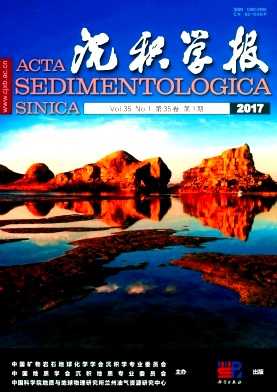The Paleoenvironmental Significance of Ginkgoites aganzhenensis Yang from the Middle Jurassic in the Baojishan Basin, Gansu Province
doi: 10.14027/j.cnki.cjxb.2017.01.006
- Received Date: 2016-01-08
- Rev Recd Date: 2016-05-20
- Publish Date: 2017-02-10
-
Key words:
- Ginkgoites aganzhenensis Yang /
- Baojishan Basin /
- Middle Jurassic /
- paleoenvironment
Abstract: Well-preserved fossil specimens of ginkgoalean leaves were collected from the Middle Jurassic Yaojie Formation of the Baojishan Basin, Gansu Province. They were identified as Ginkgoites aganzhenensis Yang according to the macro-shape and micro-characteristics. The epidermal characteristics and stomatal parameters of these fossil specimens were obtained through a cuticular analysis. The paleo-CO2 of the early Middle Jurassic was quantitatively reconstructed using two methods, 974×10-6 by the stomatal index method which was out of the error range of CO2 confidence from GEOCARB Ⅲ, 1 823×10-6 by the stomatal ratio method which was plotted within the error range of CO2 confidence from GEOCARB Ⅲ based on the SI value of Ginkgoites aganzhenensis. It implied that the stomatal ratio method is more reliable in reconstructing paleo-CO2 concentration based on Ginkgoites aganzhenensis. Compared with the paleo-CO2 level reconstructed from Phoenicopsis and Solenites, we found that from Ginkgoites is more near to the optimum line of GEOCARB Ⅲ, suggesting that the paleo-CO2 reconstructed from Ginkgoites is more advisable. And such high CO2 concentration would have caused an increase in temperature of about 7.2℃, indicating that the paleoclimate in Baojishan Basin was warm and humid temperate climate in Aalenina-Bajocian of the Middle Jurassic.
| Citation: | CHEN YingQuan, MA LiTao, PENG Lin, LIU Jun, ZHANG Li, FAN JunJie, YAN DeFei. The Paleoenvironmental Significance of Ginkgoites aganzhenensis Yang from the Middle Jurassic in the Baojishan Basin, Gansu Province[J]. Acta Sedimentologica Sinica, 2017, 35(1): 57-66. doi: 10.14027/j.cnki.cjxb.2017.01.006 |






 DownLoad:
DownLoad: